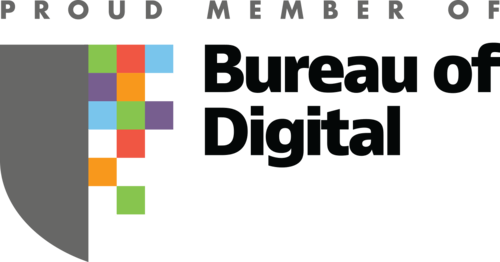Why do people ask designers to work for free?
I’ve never understood why people ask me to design for free when they would never ask an architect, interior designer, or coffee shop to hand over a product without expecting to pay.
Yet it happens frequently. Clients ask for speculative work and free pitches as a way to make sure they like what they’re going to get before paying. Here’s an example of an email I received recently:
Hi Cindy – I came across your portfolio on Behance and thought you may be interested in a design competition we launched this morning.
We are developing an app that can connect to the grocery stores you shop at and show you recipes you can cook with the groceries that you purchased.
Right now it’s live in private beta as a webapp with 1.4M recipes, 2M products and the ability to connect to 81 grocery store chains. (Walmart, Kroger, Safeway, etc)
Over the last 9 months we built out the backend and now we are looking for a designer to work with us to build the iOS and Android apps. I’d love to see what ideas you have for the design and UX.
The design competition is just for 4 screens to get a sense of your style and creativity. Here’s the link with details: (website hidden).
Let me know if you have any questions or thoughts about the competition.
The sender sent me two additional emails trying to urge me to participate. I finally responded that we don’t participate in spec work or design contests for a variety of reasons.
What is spec work?
Spec work is any creative work designers submit to prospective clients before designers are paid. It can be partial or completed. Client often claim it’s to “test” skills or demonstrate design compatibility.
This is different from showing a portfolio. A portfolio includes examples of work completed in previous projects. Spec work is creative work completed specifically for the requesting client as an example or finished design.
Recently, a prospective client demanded that I demonstrate my creative vision for her website before she would commit to moving forward with a deposit to engage our services. She claimed she had terrible previous experiences with web designers and wanted to make sure I knew what I was doing. This was after I explained our design process, provided multiple portfolio examples and references. She had even extensively complimented the Standard Beagle website itself. Needless to say, we are not working with this person.
The business model in perspective
What we do is more like commissioned art. You engage our services, and then we create. It’s a service-based model.
The product market is a different business model. In that model, the designer creates something — like a cool coffee mug — and then you see it and decide to pay for it. You get something and use it out of the box. The designer doesn’t make any changes.
If we designed websites like that, you would browse through our offerings, pay for it, download and set it up yourself. We have nothing to do with it after you pay for it.
But that’s not our model. In our service-based model, we create something custom, just for you. You engage our services, and then we go through a design process, much like commissioned art, and create a unique product just for you. You pay for our time and expertise to create the product.
Don’t confuse the two models.
What’s wrong with spec work?
It reduces value of design
There a several things wrong with spec work, and one of the biggest problem is how it reduces the value of design and designers are not fairly compensated. My time and expertise are extremely valuable. If I spend hours designing a logo for you, but only get paid $100 for my design, my value has degraded. And if I spend hours and hours and you don’t choose my design, then I won’t be compensated at all, let alone fairly.
I’m not alone in my position. Here’s what the AIGA says about spec work:
AIGA believes that professional designers should be compensated fairly for their work and should negotiate the ownership or use rights of their intellectual and creative property through an engagement with clients. To that end, AIGA strongly encourages designers to enter into client projects with full engagement to show the value of their creative endeavor, and to be aware of all potential risks before entering into speculative work.
The thing is, most people would never ask to drink a cup of coffee at a coffee shop before paying. They would never ask an architect to design their home without paying. They would never ask a doctor to treat them or perform surgery with the expectation that they should try before they buy. That’s because those same people believe in fairly compensating a person for a job performed. Design is no different. I spent years developing my expertise. I have valuable skills, and what I create is valuable.
It eliminates critical communication during design process
Our design process is intended to be collaborative with our clients. Each step of the way, we ask for feedback and implement that into our revisions. It begins with a discovery phase and goes all the way through the mockup design phase, with many steps in between.
We rely on communication with our clients to understand their vision, voice and tone. We tailor our designs to fit those and other parameters so we can fully capture the look and feel. In spec work, most of that back and forth is gone. Contests provide parameters, but generally, there’s not much more to go on if I have questions.
In the case of the client who wanted me to provide my design vision before she would commit — I could design her website countless different ways. But if I can’t talk to her through our process, how will I create a design that not only meets her aesthetic but also best serves her target audience?
Communication with the client during the design process is critical, and it takes time. Clients who work with us understand the design process is an integral part of the end product.
It’s disrespectful to designers
It’s just plain disrespectful to ask designers to hand over creative work for free. I hear things like, “Well, I just don’t have the budget.” or “I want to make sure their good.” or the worst — “It’s good exposure for them.”
That’s awful. Truly awful. Do you know how it feels to be told my portfolio looks great and you like my work, but you’d prefer to see my vision before you pay?
Is there anything positive about spec work?
I would argue no. Some people claim that it helps designers build their portfolio, but designers can do that without giving away their work.
Others claim that clients can find the best design for their project at the best price, but as I argued above, this reduces the value of the design. As a result, designers produce lower-quality work, because they know they won’t be fairly compensated, and clients receive a sub-par product.
Spec work isn’t good for clients or for designers, and that’s why we stand strongly against it.
Resources
Why spec work is bad
Thoughts on why spec work is bad and why you shouldn’t do it
AIGA position on spec work










